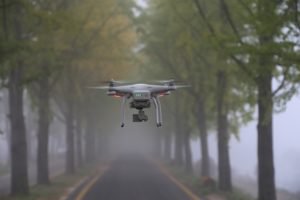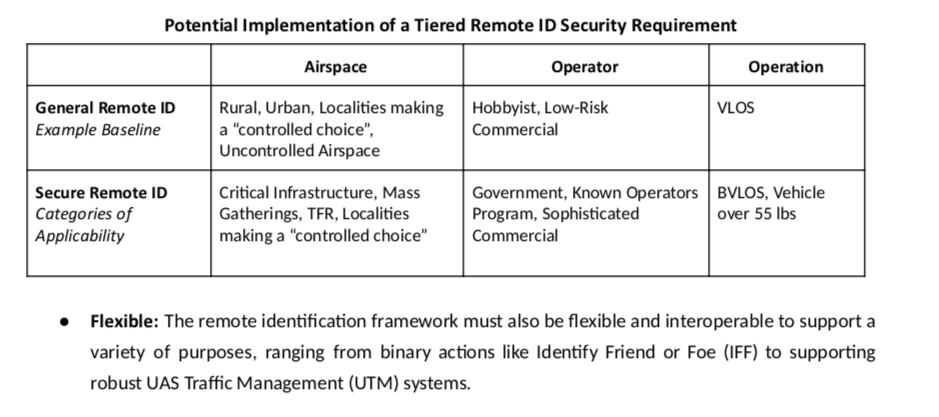Image license CC0, by Maxpixel.net
The commercial drone industry knows that drone integration – the full acceptance of drones into the existing airspace management framework – is critical for expansion. We all know that airspace security – the ability to keep drones from flying by accident or intent – around protected sites is an important piece of the puzzle. Neither industry nor regulators, however, can see a clear path forward to achieving their goals.
That’s partly because no one technology or fix will make the system work – what’s required is a complex framework to accommodate the needs of both regulators and industry, including technology solutions and clear regulations. A recent whitepaper published by airspace security firm WhiteFox does an excellent job of clarifying and explaining all of the required elements; and advocating for a moderate approach that takes into consideration security needs as well as the needs of commercial operators for flexibility.
“Millions of drones are currently flying anonymously. To safely integrate drones into the airspace, we must first build trust into the framework. We achieve trust through a comprehensive remote ID, performance-based Secure Remote ID requirements, and expanded counter-UAS authorities,” says Luke Fox, Founder and CEO of WhiteFox.
WhiteFox’s “critical recommendations for a comprehensive counter-UAS legislative framework, and a path forward for industry and government to accomplish integration of UAS in the National Airspace,” includes:
- UAS Remote Identification
- UAS Traffic Management Systems
- Counter-UAS Systems to Enhance Safety and Enable Operations
- Critical Infrastructure Facilities to Prohibit Unauthorized UAS
- Performance-Based Regulations
- The FAA’s Regulatory Role
Each of these elements is complex: but WhiteFox does a good job of outlining a flexible and tiered approach: neither heavy-handed nor overly optimistic. For example, the WhiteFox paper proposes a tiered requirement for Remote ID:
WhiteFox also states that a lack of clear authority for law enforcement makes airspace security difficult – not just for communities, but for the authorized commercial operators who risk interference through lack of awareness and appropriate training. The paper advocates a combination of clear authority, adequate training, and expanded technology tools.
The recommendations for what a comprehensive counter-UAS legislative framework should include are as follows:
-
Expand counter-UAS authority to certain state and local law enforcement agencies
-
Establish criteria for evaluating counter-UAS systems
-
Avoid interference with authorized UAS operations
-
Require mandatory training for personnel engaged in counter-UAS activity
-
Consider other technologies to create safety and security
“Today, public safety agencies, educational institutions and organizations utilize UAS for everything from disaster relief efforts to inspecting critical infrastructure to precision agriculture—and everything in between. However, recent unauthorized UAS incursions raise questions and create policy challenges,” said Luke Fox, Founder and CEO of WhiteFox. “To enable expanded commercial UAS operations in the U.S., government and UAS industry stakeholders must develop a sound strategy for working together to find a way to integrate UAS safely into the airspace.”
Headquartered in California, WhiteFox works with many government and UAS industry stakeholders, and is a member of the Commercial Drone Alliance. The company’s products securely manage drones in sensitive airspace worldwide.
Miriam McNabb is the Editor-in-Chief of DRONELIFE and CEO of JobForDrones, a professional drone services marketplace, and a fascinated observer of the emerging drone industry and the regulatory environment for drones. Miriam has a degree from the University of Chicago and over 20 years of experience in high tech sales and marketing for new technologies.
Email Miriam
TWITTER:@spaldingbarker
Subscribe to DroneLife here.
https://dronelife.com/2019/06/14/millions-of-drones-are-flying-anonymously-what-will-it-take-to-build-trust-into-the-framework-the-whitefox-policy-paper/
 Unmanned Aerial Vehicle The latest drone news
Unmanned Aerial Vehicle The latest drone news






